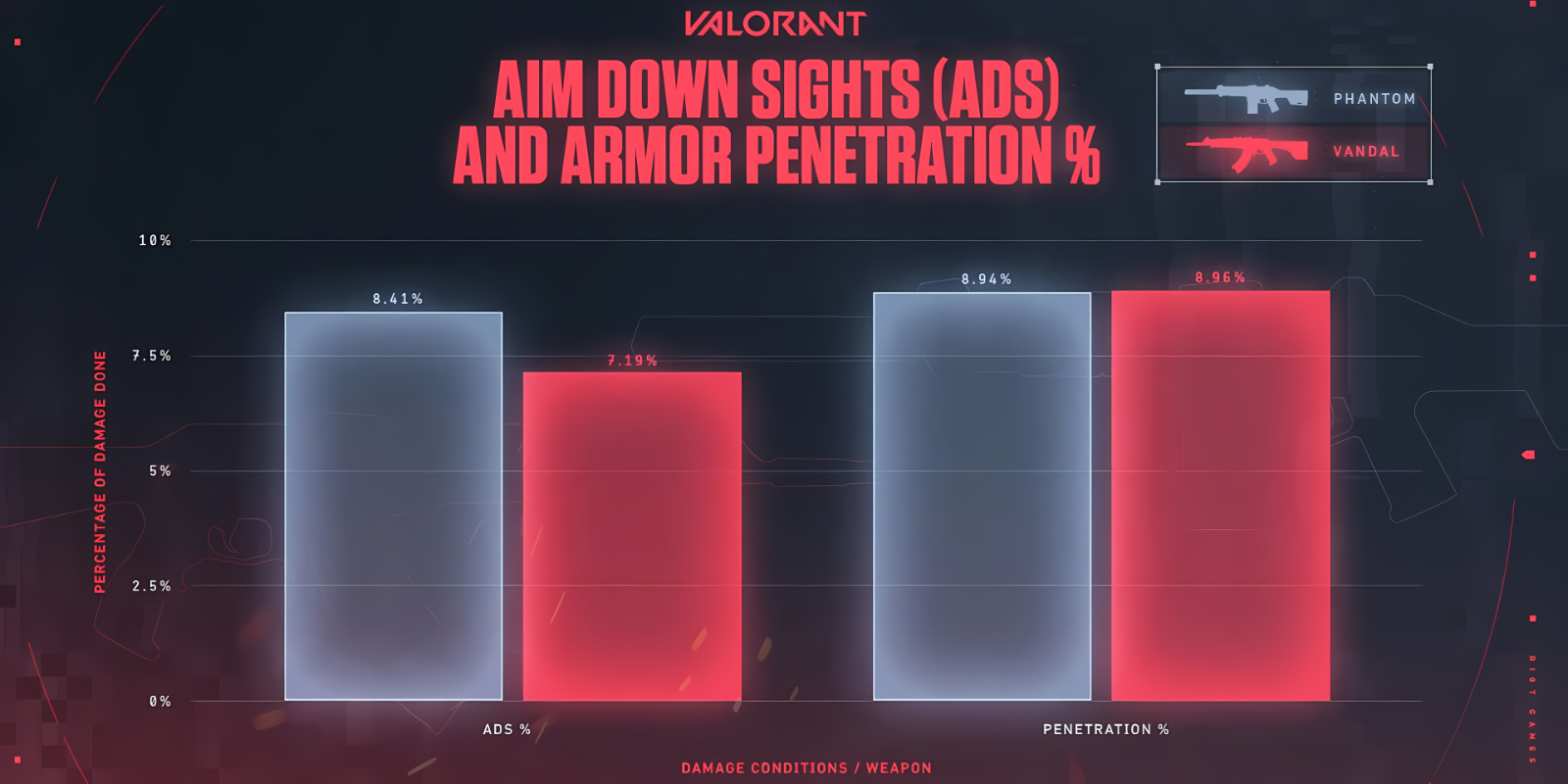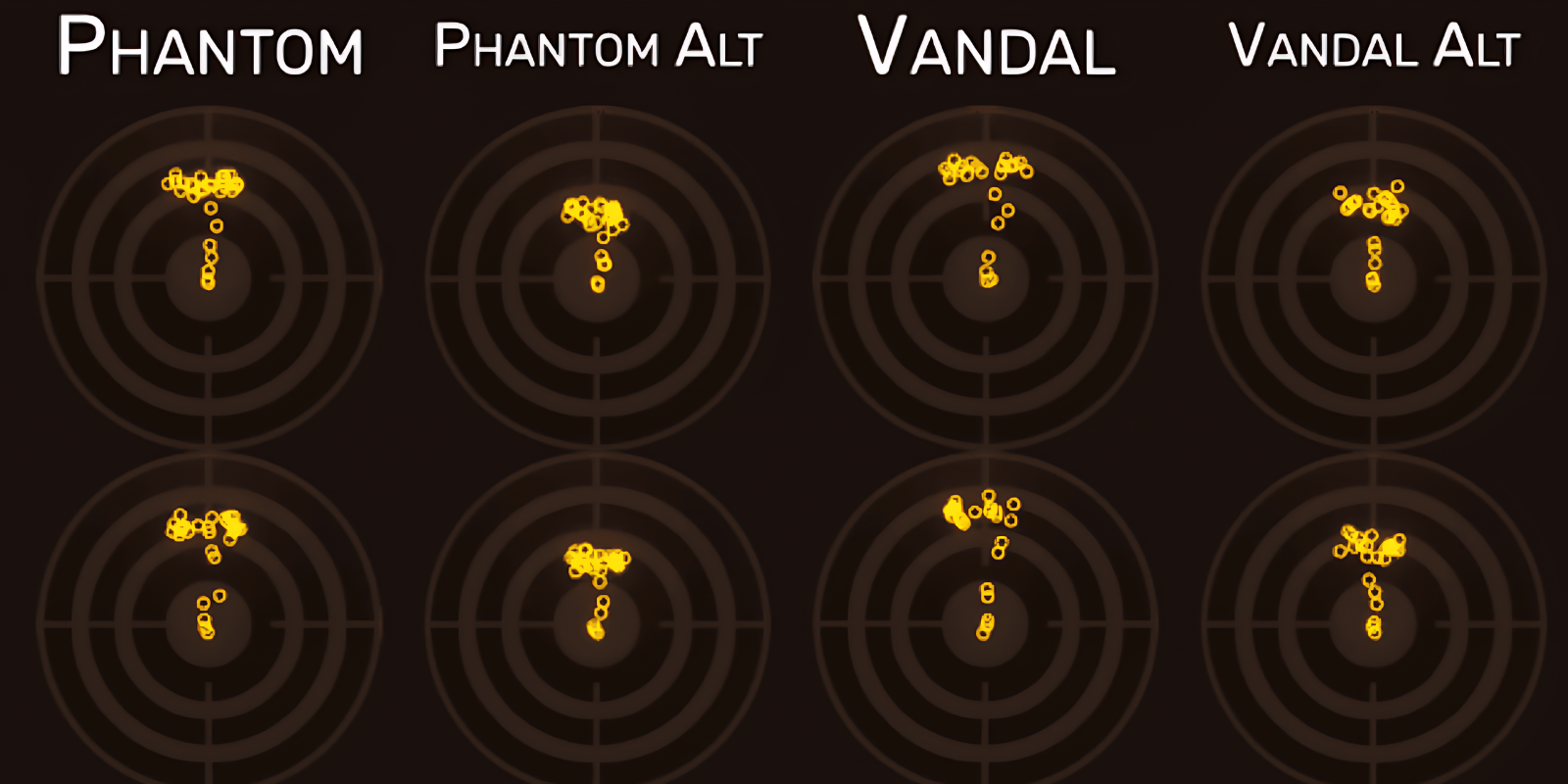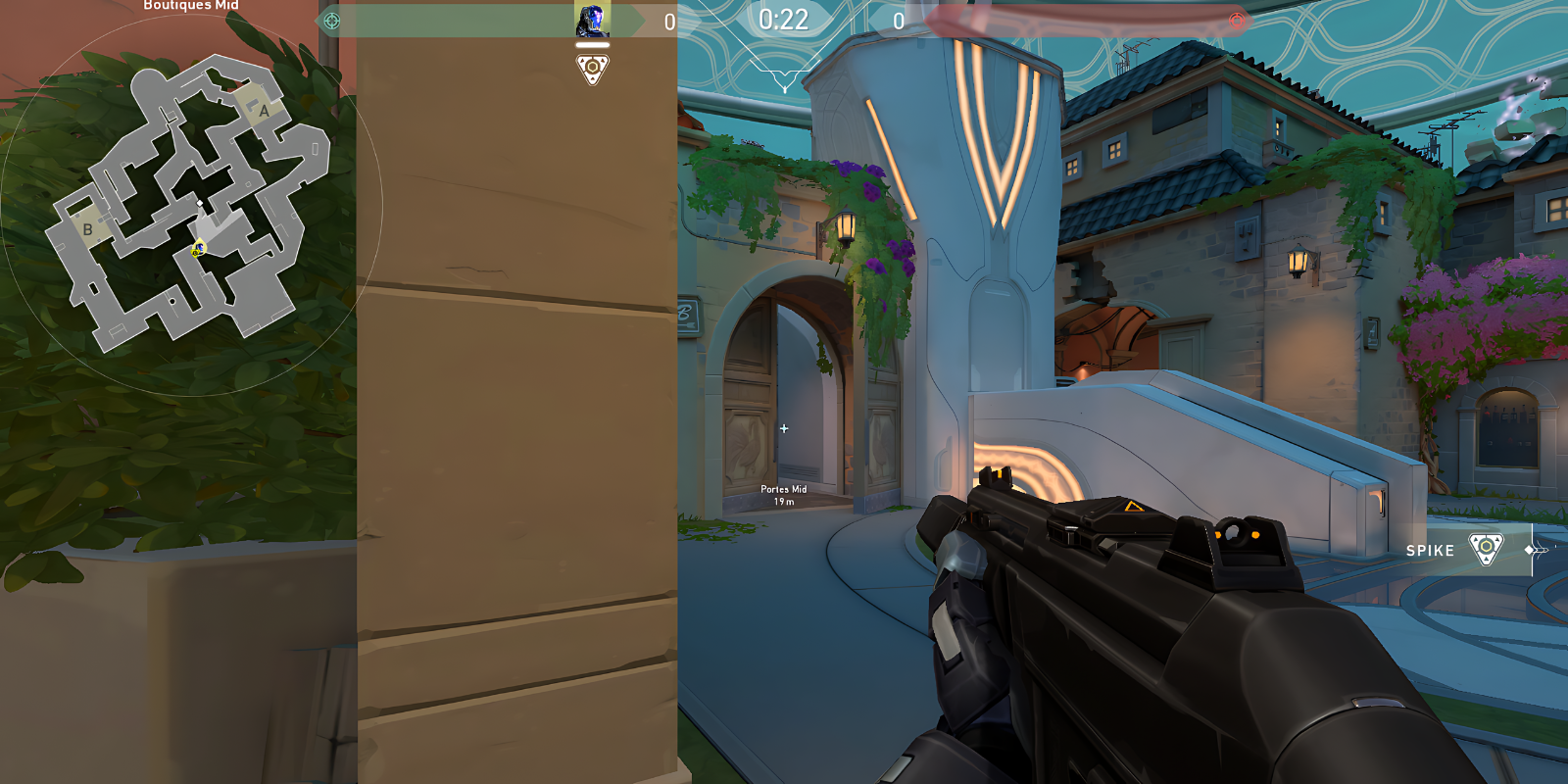Welcome to Boosting Ground's definitive analysis of Valorant's most debated weapon choice. The Phantom versus Vandal discussion isn't just about personal preference—it's about understanding how weapon characteristics align with tactical situations, agent abilities, and map dynamics. This comprehensive guide provides the strategic insights needed to make informed rifle selections that can elevate your gameplay across all competitive levels.
Fundamental Differences
The Phantom represents the stealth-oriented approach to rifle combat in Valorant. This silenced weapon excels in scenarios requiring sustained fire and concealed positioning. Its design philosophy centers around close to mid-range dominance with tactical advantages that extend beyond raw damage output.
The Vandal embodies consistent lethality across all engagement ranges. This weapon rewards precise aim with devastating one-tap potential while maintaining uniform damage output regardless of distance. Its design favors players who prioritize accuracy and long-range engagements.

Phantom Core Characteristics
| Range | Headshot Damage | Body Damage | Leg Damage |
|---|---|---|---|
| 0-15m | 156 | 39 | 33 |
| 15-30m | 140 | 35 | 29 |
| 30-50m | 124 | 31 | 26 |
Vandal Core Characteristics
Strategic Advantages and Limitations
- Higher fire rate (11 rounds/second)
- Larger 30-bullet magazine capacity
- Silenced operation with no tracers
- Superior spray control
- Excellent for close-quarters combat
- Damage fall-off beyond 15 meters
- No one-tap potential at long range
- Reduced effectiveness on open maps
- Lower initial damage per bullet
- Consistent 160 headshot damage
- One-tap potential at all ranges
- Superior long-range performance
- Reliable damage calculation
- Lower fire rate (9.75 rounds/second)
- Smaller 25-bullet magazine
- Visible bullet tracers
- More challenging recoil control

Agent-Specific Rifle Optimization
S-Tier Agent-Rifle Synergies
Viper benefits tremendously from the Phantom's characteristics when operating within her poison cloud utilities. The close-range combat scenarios created by her wall and orb abilities align perfectly with the Phantom's higher fire rate and superior spray control capabilities.
Omen represents an ideal Phantom user due to his smoke-centric playstyle. The weapon's silenced operation complements his teleportation and smoke abilities by concealing bullet tracers during stealthy repositioning and ambush scenarios.
Skye utilizes her flash abilities to create close-encounter opportunities where the Phantom's rapid fire rate and spray control provide significant advantages in follow-up eliminations.
Sova excels with the Vandal due to his information-gathering capabilities that often reveal enemy positions at extended ranges. The consistent damage output allows him to capitalize on reconnaissance data with long-range eliminations.
Chamber benefits from the Vandal's one-tap potential when holding extended angles, aligning with his sentinel role of area denial and long-range threat elimination.
Killjoy operates effectively with the Vandal when controlling areas through her utility placement. The weapon supports her defensive positioning by providing reliable long-range engagement capabilities.

A-Tier Situational Preferences
Reyna thrives in close-quarters scenarios where the Phantom's rapid fire rate supports her aggressive engagement style and quick elimination requirements for ability activation.
Jett benefits from the Phantom's spray control during fast-paced entry scenarios, particularly when utilizing her mobility to create advantageous positioning for close to mid-range duels.
Cypher often maintains long sightlines through his information-gathering utilities, making the Vandal's consistent range performance beneficial for capitalizing on detected enemies.
Sage provides team support from defensive positions where the Vandal's long-range consistency aids in maintaining territorial control and providing cover fire.
B-Tier Flexible Applications
Phoenix, Brimstone, and Fade represent agents capable of adapting to various combat scenarios. Their rifle selection depends primarily on team strategy, map dynamics, and specific round requirements rather than inherent agent synergies.
Advanced Mechanics and Hidden Characteristics
Audio and Visual Concealment
The Phantom's suppressor provides more than cosmetic benefits. The softer firing noise proves difficult to localize during chaotic engagements, particularly when third-partying or defending through smoke screens. This auditory advantage often proves decisive in post-plant situations or when maintaining concealed positions.
The absence of bullet tracers creates psychological advantages by preventing enemies from immediately identifying firing positions. This stealth factor proves particularly valuable during lurking plays and smoke-based strategies.
Recoil Mechanics and Burst Fire
The Phantom demonstrates superior recoil reset timing after short bursts, making it more forgiving for 3-4 bullet burst patterns. This characteristic supports precise shooting techniques while maintaining the option for sustained fire when necessary.
The Vandal demands more precise timing for tap-fire sequences. Millisecond delays in rhythm can significantly impact first-bullet accuracy, making it less forgiving for players with inconsistent aim timing.
Movement Accuracy Dynamics
The Phantom provides more consistent quick-peek headshot opportunities due to reduced recoil jump, particularly when utilizing counter-strafing techniques. During jiggle-peek duels, the tighter bullet spread often results in successful hits where Vandal shots might miss due to recoil patterns.
Utility Interaction Synergies
Specific agent abilities create unique opportunities for rifle optimization. Yoru's teleportation combined with Phantom spam through smokes can bait enemy rotations without revealing bullet trails. Fade's Haunt ability paired with Vandal wallbang attempts provides higher immediate impact due to superior initial damage per bullet through thin surfaces.

Map-Specific Tactical Applications
Vandal-Optimal Map Scenarios
The extended engagement ranges throughout these maps favor the Vandal's consistent damage output. Holding long-range duels capitalizes on the weapon's one-tap potential without damage fall-off concerns.
Phantom-Optimal Map Scenarios
The tight corridor design and vertical positioning opportunities favor the Phantom's spray control and close-quarters capabilities. Stealth characteristics prove valuable when clearing corners and engaging in close-range trades.

Decision-Making Framework
Range-Based Selection
Engagement Range Effectiveness
For engagements primarily occurring within 0-15 meters, the Phantom's superior fire rate and damage output provide clear advantages. The 15-30 meter range represents a transition zone where both weapons remain viable, with selection depending on specific tactical requirements.
Beyond 30 meters, the Vandal's consistent damage model eliminates the guesswork associated with damage fall-off calculations while maintaining one-tap potential against armored opponents.
Tactical Role Considerations
Players focusing on entry fragging and close-quarters combat benefit from the Phantom's spray control and sustained fire capabilities. Those emphasizing long-range duels and precision shooting find greater success with the Vandal's consistent damage model.
Support players utilizing smoke strategies and concealed positioning capitalize on the Phantom's stealth characteristics, while anchor players holding extended angles benefit from the Vandal's range consistency.
Team Strategy Integration
Aggressive team compositions with smoke-heavy strategies often benefit from Phantom selection due to the concealment advantages and close-range effectiveness. Defensive setups with long-angle holds typically favor Vandal selection for consistent elimination potential.
Mixed strategies require flexible decision-making based on specific round requirements, enemy positioning, and map control objectives.
Debunking Common Misconceptions
Contrary to popular belief, professional players do not universally prefer the Vandal. Controllers, initiators, and aggressive duelists frequently utilize the Phantom, particularly on maps with tight chokepoints or smoke-centric strategies. Weapon selection depends on utility synergy and tactical requirements rather than perceived superiority.
Defensive Side Preferences
The assumption that Vandal always proves superior on defense oversimplifies the decision-making process. Defensive positions on maps like Split's B Heaven or Bind's U-Hall involve primarily close-range combat where the Phantom's characteristics provide significant advantages through spray control and stealth operation.
Recoil Control Complexity
While the Vandal technically requires more precise recoil management, this difference becomes negligible for players utilizing proper tap-fire and burst techniques. The Vandal's recoil pattern maintains greater consistency when avoiding full-spray approaches.
Long-Range Phantom Effectiveness
The Phantom's damage fall-off does not eliminate its long-range viability. The headshot damage reduction from 156 to 124 beyond 30 meters often still results in eliminations or creates advantageous damage states for quick follow-up shots, particularly against enemies without full health or armor.
Meta Weapon Superiority
Neither rifle represents a universally superior choice. The deliberate balance design creates two distinct approaches to rifle combat: Phantom for speed, stealth, and spray control versus Vandal for precision, consistency, and range flexibility. Optimal selection depends on individual playstyle, agent choice, map dynamics, and tactical requirements.

Implementation Strategy
Personal Playstyle Assessment
Players should evaluate their natural aim tendencies, preferred engagement ranges, and tactical approaches when making rifle selections. Those favoring sustained fire and close-quarters aggression typically find greater success with the Phantom, while precision-focused players benefit from the Vandal's consistent damage model.
Situational Adaptation
Effective rifle selection requires adaptability based on round-specific factors including team composition, enemy positioning, map control status, and economic considerations. Rigid adherence to single-weapon preferences limits tactical flexibility and overall effectiveness.
Practice and Mastery
Comprehensive understanding of both weapons enables intelligent selection based on situational requirements rather than comfort preferences. Regular practice with both rifles develops the versatility needed for optimal decision-making across diverse tactical scenarios.
This complete analysis provides the foundation for informed rifle selection that aligns with individual playstyles, agent abilities, and tactical objectives. Mastery of both weapons creates the flexibility needed to adapt to varying competitive scenarios while maximizing elimination potential and tactical effectiveness.

